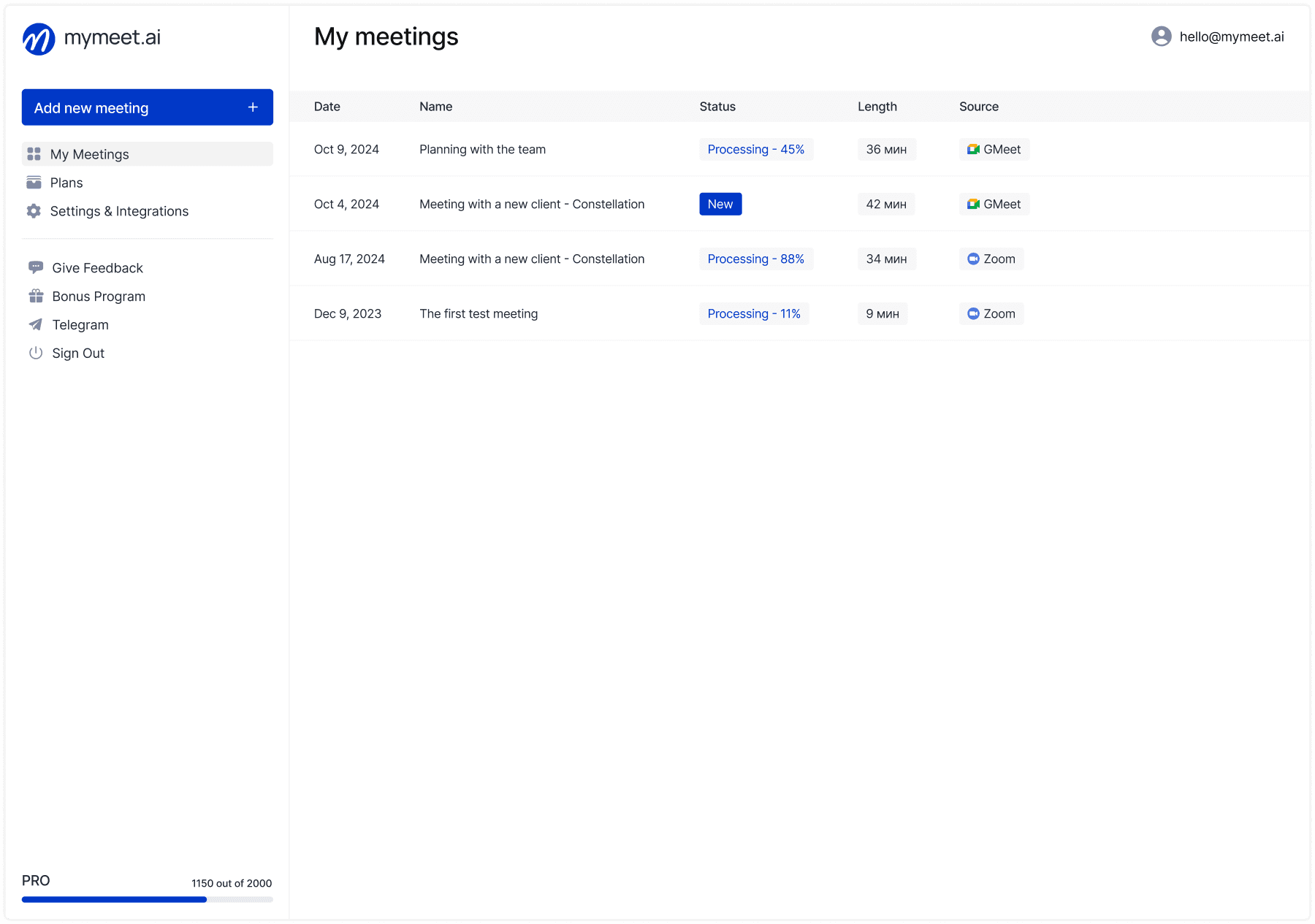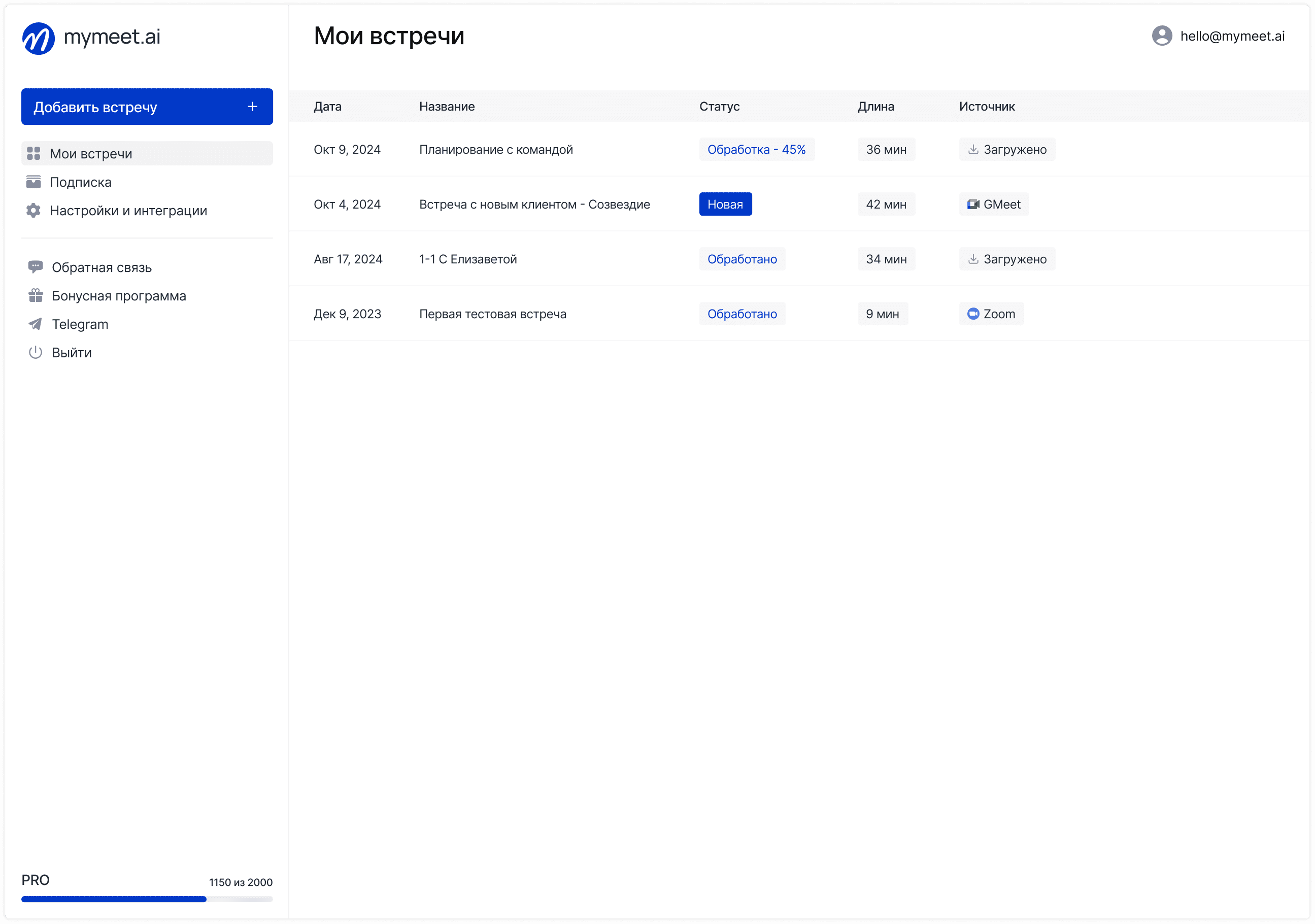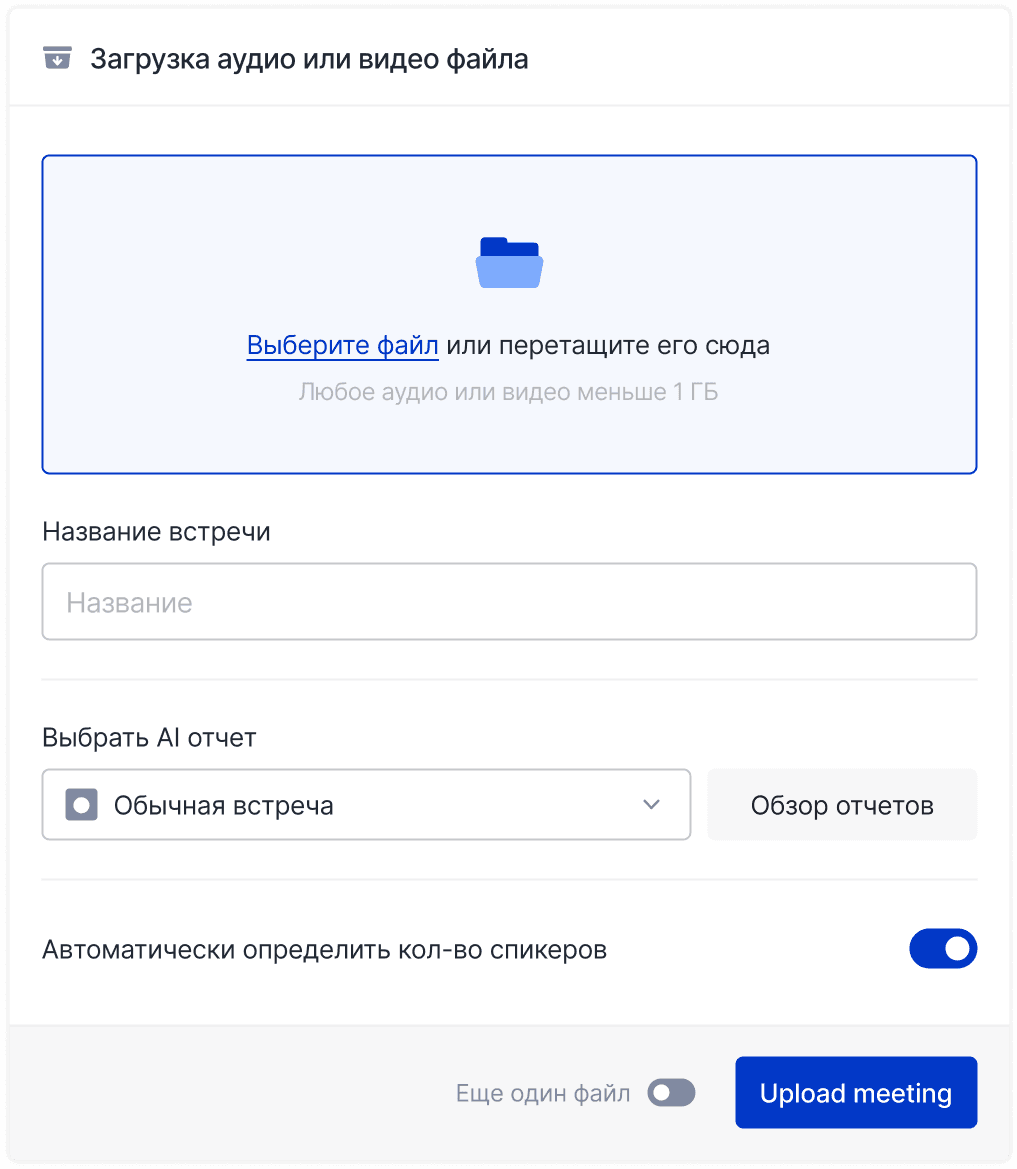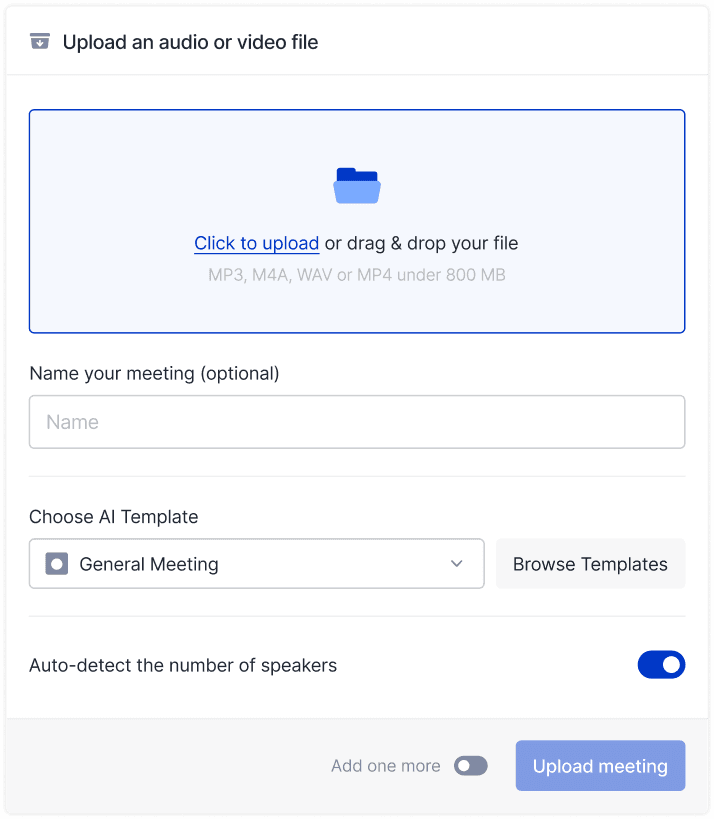Meeting Tips

Ilya Berdysh
May 27, 2025
A familiar situation: you're conducting a video conference, but half the participants have turned off their cameras, some are clearly occupied with other tasks, and the chat is dead silent. The remote work era has made online meetings an integral part of business life, but maintaining participant engagement in virtual space has proven more challenging than in a real meeting room.
Game mechanics are a powerful tool that can transform passive listeners into active participants. Incorporating gamification elements into the meeting structure not only makes it more engaging but also significantly increases productivity, promotes better information retention, and strengthens team connections. In this article, we'll explore practical ways to integrate game elements into various online meeting formats—from daily status meetings to large-scale conferences.
Why Game Mechanics Work in a Business Context
Game mechanics are successfully applied in business not because adults want to play during work hours. They're effective due to the deep psychological principles that underlie them.
The human brain is naturally tuned to seek rewards, overcome obstacles, and engage in social interaction. Game elements tap into precisely these neurobiological mechanisms. When we receive points, levels, or badges, our brains produce dopamine—a neurotransmitter associated with pleasure and motivation. That's why even simple game mechanics can significantly increase engagement.
Research shows that meetings with gamification elements demonstrate a 37% higher level of active participation and 44% better information retention compared to traditional formats. Game mechanics work for people of different ages and professional backgrounds—the key is simply choosing the right elements for the specific audience.
Gamification is particularly effective in an online environment, where traditional methods of maintaining attention (eye contact, body language) are limited. Well-chosen game elements can compensate for these limitations by creating new engagement channels.
Basic Game Mechanics for Online Meetings
There are numerous game mechanics that can be incorporated into online meetings. Let's look at the most universal and simple to implement.
Point Systems and Rankings

One of the simplest and most effective mechanics is awarding points for certain actions during a meeting. This system creates healthy competition and motivates participants to be active.
Implementation options:
Points for constructive comments and questions
Points for timely completion of tasks discussed at the meeting
Participant activity rankings at the end of a series of meetings
Virtual currency that can be exchanged for real bonuses (coffee, additional day off)
It's important to ensure transparency in the point system and regularly update information about current results. Shared spreadsheets or specialized platforms for business process gamification can be used for this.
Challenges and Quests

Adding an element of challenge or quest can significantly enliven routine meetings. This mechanic appeals to the desire to overcome obstacles and achieve set goals.
Implementation examples:
"Quest of the week"—a task the team must solve collectively by the next meeting
"Speaker challenge"—a short problem-solving task in the middle of a lengthy presentation
"Information hunt"—collecting key data from various presentations during a conference
"Secret word of the day"—participants must react in a certain way when they hear this word
Quests and challenges should be difficult enough to stimulate interest but achievable to avoid frustration. The ideal balance is when the task requires a small step outside the comfort zone.
Timers and Limitations

Introducing time constraints creates healthy tension and improves participant focus. This mechanic is especially effective for combating meeting "stretch."
Application methods:
Countdown timer for each speaker
"Lightning" rounds—30 seconds to speak on a specific topic
"Hot seat"—random selection of the next speaker when the previous one's time expires
"Last chance"—special time at the end of the meeting for participants who didn't get to speak earlier
Visualizing the timer on the screen makes time constraints more tangible and helps participants better distribute their speaking time. Many video conferencing platforms have built-in timers or allow using third-party applications.
Elements of Randomness

Unpredictability adds an element of intrigue and keeps participants' attention. Random mechanics make everyone stay alert since no one knows who will be involved in the activity next.
Usage options:
Randomizer for selecting the next speaker
"Fate cards"—random card with a question or task
"Wheel of fortune" to determine the next discussion topic
Unexpected "attention checks" with questions about previous material
There are many online tools for implementing elements of randomness that easily integrate into video conferences through screen sharing. It's important to use this mechanic so that it's perceived as a game element, not as a way to "catch" unprepared participants.
Specialized Game Mechanics for Different Meeting Types
Different business meeting formats require different approaches to gamification. Let's look at specialized mechanics for the most common types of online meetings.
For Daily Status Meetings
Daily standups often suffer from monotony and turn into routine. Game elements can make them more dynamic and informative.
Effective mechanics for status meetings:
"Baton pass"—each participant chooses who will speak next
"Status in three words"—before a detailed report, briefly characterize the project's state
"Problem traffic light"—visual classification of blockers by criticality level
"Emotion wheel"—quick assessment of team mood at the meeting start
For teams working in agile methodologies, mechanics focusing on progress and overcoming obstacles are particularly useful. They allow visualizing movement toward sprint goals and quickly identifying problems.
For Strategic Sessions and Brainstorming
Creative meetings and planning sessions benefit from mechanics that stimulate unconventional thinking and structured discussion.
Game approaches for creative sessions:
"Idea maps"—visual construction of connections between participants' suggestions
"Thinking modes"—role-playing mechanics where each participant represents a certain type of thinking (optimist, critic, analyst)
"Silent voting"—simultaneous evaluation of ideas using virtual stickers or reactions
"Idea relay"—each person must develop the previous participant's idea
For such meetings, it's especially important to create an atmosphere of psychological safety where people aren't afraid to express unconventional ideas. Game mechanics help reduce social pressure and allow even more introverted colleagues to participate.
For Educational Webinars and Training
Educational online meetings require special attention to mechanics that improve information assimilation and retention.
Mechanics for educational sessions:
"Quick polls"—periodic comprehension checks with virtual cards
"Practical labs"—mini-tasks to apply newly acquired knowledge
"Learning progress bar"—visualization of advancement through the educational program
"Team battles"—competition between small groups of participants
In an educational context, it's particularly important to balance competitive elements with collaborative ones to create a supportive learning environment. The emphasis should be on personal progress and practical application of knowledge.
For Large Corporate Events
Large-scale online events with many participants require a special approach to gamification that will ensure engagement from a wide audience.
Game mechanics for large events:
"Digital event passports"—marks for attending different sessions and completing activities
"Contact hunt"—encouraging networking through game tasks
"Global challenges"—large-scale tasks requiring collective efforts from all participants
"Visual progress paths"—interactive maps showing advancement through the conference program
At large events, good technical implementation of game mechanics is critically important. The more participants, the higher the reliability of the tools used and the simplicity of interfaces should be.
Digital Tools for Gamifying Online Meetings
Modern technologies offer a wide range of tools that simplify the implementation of game mechanics in online meetings. From simple built-in video conferencing functions to specialized platforms—the choice depends on your tasks and technical capabilities.
mymeet.ai: Engagement Analytics for Optimizing Game Mechanics

mymeet.ai is an intelligent platform for analyzing business communications that becomes an indispensable tool when implementing gamification elements in online meetings:

Precise measurement of participant activity—the system tracks each participant's speaking time and dialogue distribution, allowing for objective engagement rankings
Emotional tone analysis—determining enthusiasm and engagement levels based on speech patterns helps understand which game mechanics elicit positive responses

Identifying moments of maximum activity—determining which topics or game elements generate the most interest from the team
Evaluating game technique effectiveness—comparing engagement before and after gamification implementation using quantitative metrics

Personalized analytics—identifying individual participant preferences for customizing game mechanics for each team member
An important advantage of mymeet.ai is the automatic creation of meeting transcriptions with speaker differentiation, which allows tracking not only quantitative engagement indicators but also qualitative participation characteristics. The system supports 73 languages, including Russian, and integrates with popular video conferencing platforms.
New users get 180 minutes of free usage without payment data attachment, which provides an opportunity to conduct several gamified meetings and evaluate their effectiveness based on objective data.
Basic Functions of Video Conferencing Platforms
Most popular online meeting services already contain functions that can be creatively used for gamification:
Zoom: polls, breakout rooms, reactions, virtual backgrounds
Microsoft Teams: live reactions, polls, breakout rooms, extension applications
Google Meet: polls, Jamboard, automatic subtitles, Q&A
Webex: polls, gestures, breakout rooms, game extensions
Skillful use of even basic functions can significantly increase interactivity. For instance, the "raise hand" function can become the basis for a "fastest" game, while reactions can be a method of quick voting. Meanwhile, mymeet.ai can be used to record and analyze such meetings to determine the most effective game mechanics.
Specialized Collaboration Tools
For more advanced meeting gamification, platforms specifically designed for interactive collaboration are useful:
Miro and Mural: virtual boards with timers, voting, game templates
Mentimeter: interactive presentations with polls and word clouds
Slido: polls, quizzes, question rankings
Kahoot and Quizizz: competitive quizzes with rankings and prizes
These tools easily integrate into most video conferences through screen sharing and create space for more complex interactive activities.
Platforms for Comprehensive Gamification
For long-term and systematic gamification of business processes, specialized platforms exist:
Habitica: turning work tasks into quest elements
Funifier: business game constructor and gamified processes
Centrical: comprehensive work process gamification with analytics
Gameffective: integration of game elements into corporate systems
These solutions require longer implementation but allow creating a holistic gamification system extending beyond individual meetings.
Other Engagement Analytics Tools
Besides mymeet.ai, other analytical tools can be used to measure gamification effectiveness:
Hypercontext: meeting effectiveness analytics with engagement tracking
Visualtime: tracking active participation and attention focus
SessionLab: tools for designing interactive sessions with results analytics
Data from such systems helps understand which game mechanics work best for a specific team and adjust the approach based on objective information.
Practical Examples of Online Meeting Gamification
Theory is important, but real cases demonstrate how game mechanics actually work in a business context. Let's look at several successful examples of implementing gamification in various types of online meetings.
Case 1: Gamified Daily Meetings in an IT Company

An IT team of 12 people faced the problem of declining engagement in daily standups. Research showed that most participants perceived the meetings as a routine formality.
Implemented solution: "Status Wheel"—an interactive mechanic where:
Each day the meeting is started by a random participant (selected through a virtual wheel of fortune)
The speaker receives a random card with an additional question/task
"Team points" are awarded for constructive help to colleagues
Weekly, the team with the most points receives a small prize
Results after a month of use:
Average standup duration decreased by 22%
The number of blockers actually resolved during meetings increased by 37%
89% of the team noted that meetings became more useful and interesting
Inter-team communication and mutual assistance improved
Key success factor: combination of randomness elements, which make each meeting unique, with a system of recognition and reward for helping colleagues.
Case 2: Gamification of Quarterly Strategic Session

The marketing department of a large company conducted quarterly strategic online sessions, which often proved unproductive due to low engagement and domination by a few participants in discussions.
Implemented solution: "Strategic Quest" with elements:
Preliminary anonymous idea collection through an interactive board
Role distribution for the session duration (researcher, critic, idea defender, etc.)
Voting system with a limited number of "investment tokens"
Project roadmap as a game board with progress visualization
Results:
Number of implemented ideas increased by 40%
Time from idea to implementation reduced by an average of 3 weeks
Junior staff engagement increased 2.5 times
100% of participants noted better understanding of strategy after such sessions
Key success factor: creating a psychologically safe environment through role mechanics, allowing expression of critical opinions and unconventional ideas without the personal factor.
Case 3: Gamification of Corporate Online Training

A company conducted a series of mandatory cybersecurity trainings, which were traditionally perceived by employees as a boring formality. Information retention indicators were low.
Implemented solution: "Cyber Mission"—a gamified training including:
Content division into levels with gradual difficulty increase
Virtual "attacks" with limited reaction time
Team competitions for threat identification
Achievement system and visual progress bar
Results:
Voluntary participation in additional modules increased by 64%
Final testing results improved by an average of 27%
The number of real cybersecurity incidents decreased by 12%
The training became used as a best practice example in other departments
Key success factor: transforming passive learning into an active experience with real scenarios and tangible progress that motivates continued learning.
Tips for Effective Implementation of Game Mechanics
The experience of companies successfully applying gamification in business meetings allows formulating a series of practical recommendations.
Start Small and Iterate
It's best to start implementing game mechanics gradually, adding one element at a time and evaluating participant reactions. This approach allows:
Avoiding overload and confusion
More accurately determining which mechanics work for your team
Giving participants time to get used to the new format
Adjusting the approach based on feedback
Start with simple, intuitive mechanics, such as a point system for active participation or a timer for presentations. After successful implementation, you can move on to more complex elements.
Adapt Mechanics to Your Audience
There's no universal set of game mechanics suitable for all teams. Consider:
Age composition and digital literacy of participants
Corporate culture and formality level
Industry specifics and professional peculiarities
Team's previous experience with interactive formats
A complex system with digital badges and leaderboards might suit a technically savvy young team, while simpler polls and voting would be better for a more conservative audience.
Explain the Purpose and Value of Gamification
Many people are skeptical about game elements in a business context. To overcome this resistance:
Explain how specific mechanics relate to business goals
Emphasize that game elements are a tool for increasing efficiency, not an end in themselves
Provide examples of successful application of similar approaches in other companies
Demonstrate positive results and collect feedback
It's important that participants understand the value of game mechanics and don't perceive them as unserious entertainment or a waste of time.
Maintain Balance Between Games and Business Content
Gamification should enhance the main meeting purpose, not distract from it. To achieve this:
Integrate game elements organically into the meeting structure
Ensure game mechanics don't occupy more than 30% of the total time
Provide a direct connection between game actions and business tasks
Be ready to adjust or temporarily abandon game elements if they don't work
Remember that the ultimate goal is not to make the meeting entertaining, but to increase its efficiency and effectiveness.
Measuring the Effectiveness of Game Mechanics
Like any business tool, online meeting gamification requires objective effectiveness evaluation. This allows optimizing the approach and justifying the value of new formats.
Key Metrics to Track
The following indicators can be used to evaluate gamification effectiveness:
Quantitative metrics:
Percentage of active participants (asking questions, commenting)
Average time of engaged participation
Evenness of speaking distribution among participants
Number of proposed ideas/solutions
Attendance level at regular meetings
Qualitative indicators:
Participant satisfaction with the meeting format
Quality of decisions made
Speed of implementing agreements
Improvement in team atmosphere and collaboration
Retention of key information after the meeting
To collect this data, you can use both built-in analytics of video conferencing platforms and specialized tools like mymeet.ai, which allow tracking engagement patterns throughout the meeting.
Comparative Analysis
The most objective evaluation of game mechanics effectiveness comes from comparison with control indicators. For this, you can:
Compare metrics before and after implementing game elements
Conduct parallel meetings in traditional and gamified formats
Analyze long-term trends after implementing gamification
Compare results of different game approaches to identify the most effective ones
Such analysis not only shows the objective value of gamification but also allows continuously improving the approach by selecting the most effective mechanics for your team.
Conclusion
Game mechanics transform dull online meetings into spaces for active interaction. Point systems, challenges, timers, and elements of randomness engage fundamental motivation mechanisms, bringing participants' attention back to the virtual meeting room.
Successful cases from different industries confirm: well-chosen game elements significantly increase team engagement, improve information retention, and accelerate decision-making. Tools like mymeet.ai make gamification implementation accessible for teams of any size and technical preparation.
The key to success is gradual integration of game mechanics considering your audience's characteristics. Start with one element, measure the result, adjust the approach.
Gamification creates a work environment where kilometers between team members cease to be an obstacle for productive and engaging communication. In a world where remote work is becoming the norm, the ability to create engaging virtual meetings is a critically important skill for any leader.
Frequently Asked Questions
Won't game mechanics be perceived as unserious or distracting?
When properly implemented, game elements are perceived as an organic part of the work process. The key point is explaining how these mechanics relate to business goals. Start with more restrained elements, such as timers or structured discussions, gradually adding more explicit game components.
How do you engage introverts and people uncomfortable with public speaking?
Well-designed game mechanics reduce social pressure. Use anonymous polls, written participation formats, role-playing techniques where the participant can "hide" behind a role. Alternate between group and individual activities. Provide opportunities to prepare in advance by sending questions or topics before the meeting.
What level of technical preparation is required to implement game mechanics?
Many basic game elements can be implemented with minimal technical preparation, using built-in functions of video conferencing platforms. For more complex mechanics, there are intuitive tools with visual interfaces that don't require special skills. If necessary, you can start with simple solutions and gradually master more advanced tools.
Are game mechanics suitable for meetings with clients and external partners?
Yes, but more careful element selection is required. For external meetings, restrained mechanics such as interactive polls, moderated discussions with idea visualization, and timers are suitable. It's important to consider the corporate culture of partners and preliminarily assess their openness to non-standard formats.
How often should game mechanics be changed to prevent them from becoming boring?
The basic structure should be maintained long enough for participants to get used to and start extracting maximum benefit. However, details—specific tasks, questions, elements of randomness—should be updated every 4-6 weeks. This balance provides a sense of structure predictability while maintaining novelty and interest.
Can game mechanics work in large online meetings with hundreds of participants?
Yes, but careful planning is required. For large-scale meetings, effective mechanics include breaking the large group into small teams, asynchronous tasks that maintain engagement, voting and polls that visualize the audience's "collective mind." Technical reliability of the chosen tools is critically important for such scales.
Ilya Berdysh
May 27, 2025








